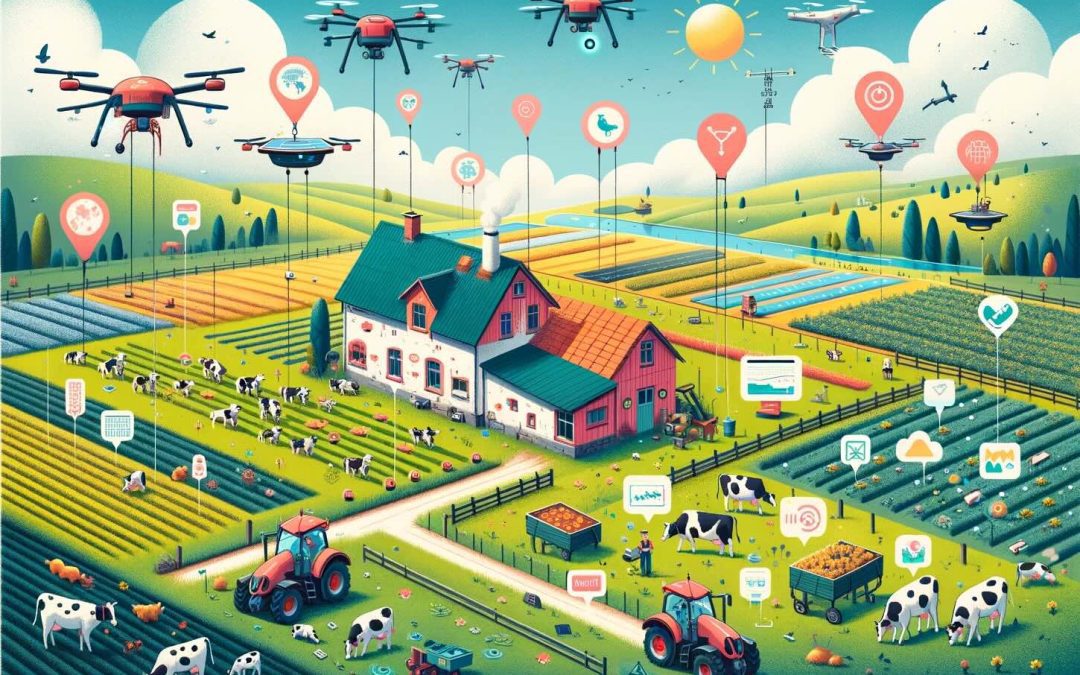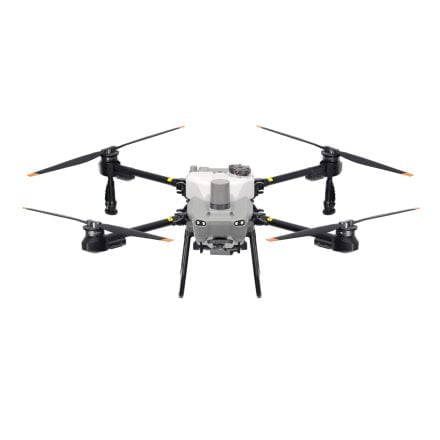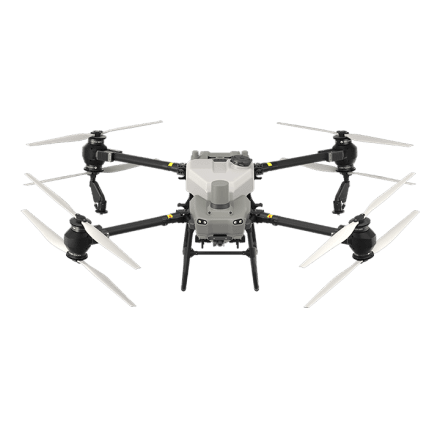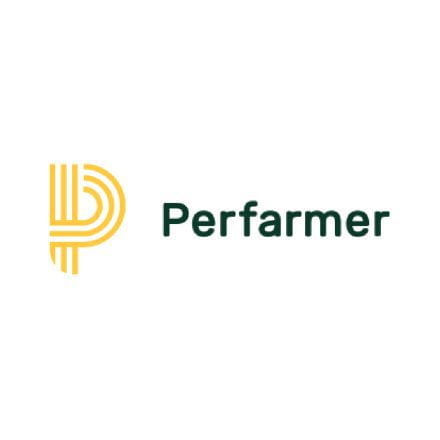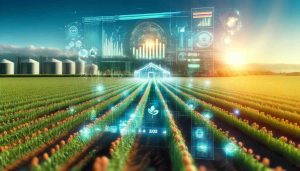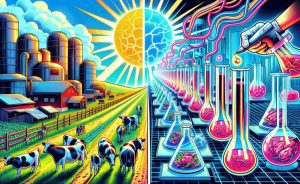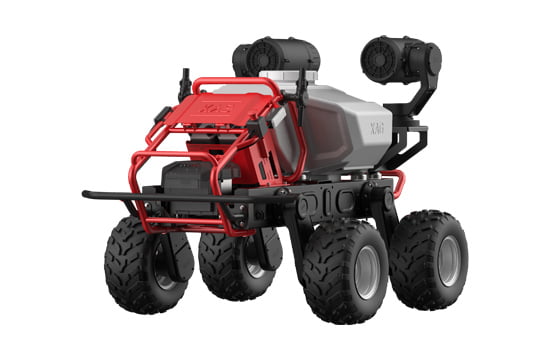Agriculture stands poised for disruption by a wave of emerging technologies collectively called AgTech. From drones and sensors to robots and artificial intelligence, these advanced tools hold immense potential to address rising food demands and environmental pressures. This comprehensive guide examines the array of AgTech innovations transforming modern agriculture.
We’ll survey key categories like software, hardware, robots, and data analytics models powering the future of farming. For farmers weighing adoption, we’ll analyze the benefits and implementation challenges of AgTech. One thing seems certain – data-driven, precise, and automated agriculture will revolutionize productivity and sustainability in the years ahead.
What is AgTech
Software solutions
Artificial Intelligence
Hardware technologies like drones and sensors
Robotics
How to implement agtech in your farm
Farming Challenges Addressed by AgTech
Key Takeaways on the Future of Agriculture Technology
What Exactly is AgTech?
AgTech refers broadly to any technology applied to improve agricultural practices and productivity.
The fast-evolving AgTech landscape includes:
- Software platforms to optimize decisions and operations.
- Hardware tools like autonomous drones and robotic farm equipment.
- Advanced sensors that measure soil chemistry, crop maturity, moisture levels, etc.
- GPS, mapping, and vision systems to track fields and livestock.
- Artificial intelligence, machine learning and predictive analytics models.
- Internet of Things and other emerging technologies still reaching farms.

This technology-powered transformation aims to sustainably increase yields and efficiency as global populations surge. AgTech enables automation of routine tasks as well as data-driven management not possible before.
Adoption continues accelerating as AgTech proves its return on investment. Recent surveys show roughly 70% of farms now incorporate some level of technology like GPS mapping or crop sensors. AgTech spending hit $7 billion in 2019, with projections it could reach $30 billion by 2025. Next let’s survey some prominent existing AgTech software powering farms.
Current Agricultural Software Categories
Specialized software now assists farms with planning, coordination, tracking yields, monitoring crops, managing inventory, training personnel and much more. Overview of farming software.

Here are some of the most impactful agriculture software categories:
Farm Management Software
Farm management software helps farmers overview, analyze and optimize their entire operation. These platforms compile data like equipment telemetry, crop yields, payroll, accounting, schedules, licenses, compliance documentation and more in one centralized system. This consolidated data informs better decisions on planting, spending, storage, sales and HR.
Popular solutions like FarmLogs, Croptracker and Agrivi offer robust free plans, while companies like FarmFlo, AgriWebb and Granular provide premium software with added features. Most integrate with mobile apps for access on-the-go. Prices range from free up to $8/acre for advanced functionality.
Precision Agriculture Software
Precision agriculture leverages GPS, GIS mapping, and sensors to guide highly targeted interventions in the field. Specialized software synthesizes massive data streams from weather stations, soil probes, drones, tractor fleets, and more to prescribe precise farming actions based on hyperlocal conditions.
Major brands include John Deere Operations Center, Trimble Ag Software, and Climate FieldView. These programs integrate with GPS-guided autonomous tractors capable of planting, spraying, tilling and harvesting with centimeter-level accuracy. Subscriptions cost $500-$3000 annually.
Crop Monitoring/Scouting Software
Daily crop monitoring to catch problems early is vital but labor-intensive. Crop monitoring software combines satellite imagery, drone footage, sensor data and AI to automatically identify crop stress, predict yields, and alert farmers to signs of disease, pests, nutrient deficiencies and more.
Companies like Ceres, Gamaya, Taranis, and Agremo provide specialized crop monitoring software as a service. These tools recognize issues human scouts would miss while covering far more acreage. Programs cost roughly $2-$12 monthly per acre for standard to premium levels of analysis.
Artificial Intelligence in Agriculture: Revolutionizing Farming
The integration of Artificial Intelligence (AI), Large Language Models, Computer Vision, and Neural Networks in agriculture is revolutionizing the way we approach farming. Here’s how these technologies are making a significant impact.

Large Language Models
- Decision-Making Assistance: Large language models like agri1.ai can analyze vast amounts of agricultural data, providing insights and recommendations for farm management, crop selection, and pest control strategies.
- Customized Reports and Predictions: They can generate reports and forecasts on crop yields, soil health, and market trends, helping farmers make informed decisions.
Computer Vision
- Crop Monitoring and Analysis: Computer vision systems are adept at monitoring crop health, identifying diseases, and assessing crop maturity, enabling timely interventions.
- Automated Harvesting: These systems guide robotic harvesters to accurately identify and pick ripe produce, increasing efficiency and reducing labor costs.
Neural Networks
- Predictive Analytics: Neural networks analyze patterns in weather, soil conditions, and crop growth, predicting outcomes like yield and disease risk, leading to proactive farming practices.
- Resource Optimization: They assist in optimizing water usage, fertilizer application, and other inputs, ensuring sustainable and efficient farming.
Impact on Agriculture
- Increased Efficiency and Yield: These technologies enable more precise and efficient farming, leading to increased yields and reduced waste.
- Sustainability and Environmental Protection: AI-driven practices contribute to sustainable farming, minimizing the environmental footprint.
- Cost-Effectiveness and Scalability: With AI, farms of all sizes can optimize operations and reduce costs, making technology accessible to a wider range of farmers.
Cutting-Edge Agricultural Hardware Technologies
Advanced agricultural hardware employs robotics, automation, imaging and sensing to handle essential farming tasks more efficiently. Here are some of the most promising emerging AgTech hardware tools.

Drones
Unmanned aerial vehicles equipped with specialized sensors and cameras survey vast fields easily. Drones create detailed crop maps, detect irrigation problems, and identify pests/disease outbreak locations for early intervention. Ag drones also enable safe, targeted spraying of crops with minimal drift.
Popular models include the DJI Agras series designed specially for crop spraying. SenseFly and Sentera also offer agricultural drones bundled with advanced analytics software to add value to the aerial insights. Commercial-grade drones typically cost $10,000 to $30,000.
Discover the drones on agtecher.
Robotic Milking Systems
Automated milking systems apply robotics to milk cows without human labor. A single robotic milking unit can handle 50-100 cows, often yielding more milk since cows can be milked more frequently. The robots clean teats, attach milking apparatus, and control the milk flow.
Leading suppliers like Lely, GEA Farm, Fullwood Packo, BouMatic and DeLaval offer complete robotic milking stalls. Their efficiency enables farms to expand herd sizes dramatically. However, each robotic milker requires a $150,000-$250,000 investment.
Autonomous Tractors & Farm Vehicles
Self-driving tractors and other farm equipment operated via GPS eliminate the need for human drivers. Autonomous technology automates plowing, tilling, planting, spraying, harvesting and more. John Deere, Case IH and Kubota offer commercial autonomous tractors, while startups like Monarch Tractor are entering the market.
Fully autonomous equipment remains expensive but costs are falling. New robot-as-a-service tractor models also enable affordable renting. Their ability to work fields around the clock with minimal oversight promises to revolutionize production.
Innovative Agricultural Robotics
While still developing, robots are taking over a growing range of farm responsibilities.
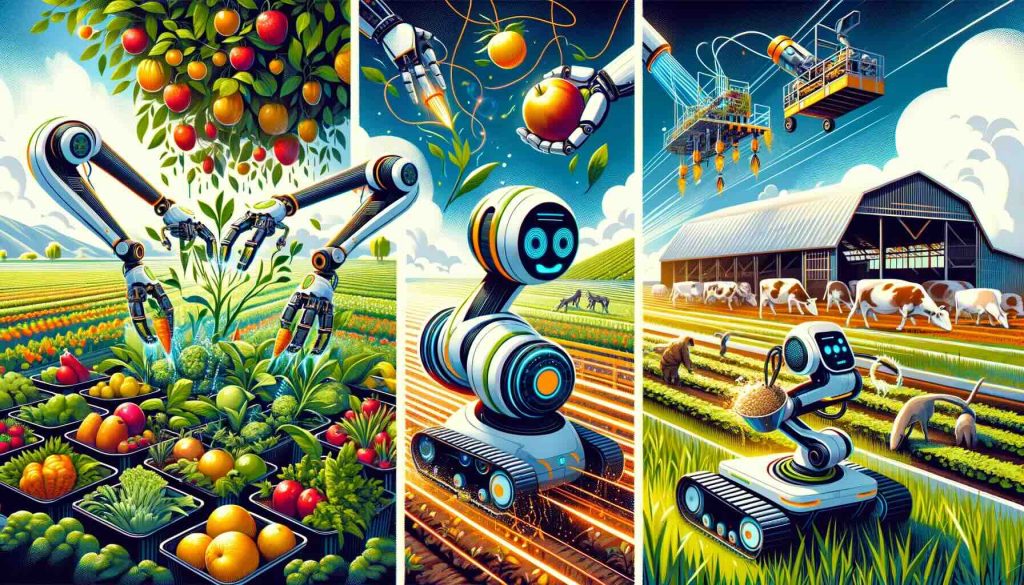
Agricultural robotics innovation includes
Robotic Fruit & Vegetable Pickers
Fresh produce picking has always been slow, labor-intensive work. But robots like Agrobot and Abundant Robotics feature advanced grippers and vision systems to identify and gently pluck ripe produce. Although limited, their capabilities will rapidly expand to additional fruits and vegetables. Discover: IAV’s Automated Fruit Picking Robot.
Autonomous Weeders
Precision weeders can thin fields and kill unwanted plants while avoiding crops. Developers like Naio Technologies and FarmWise build robots that deploy mini-flames, electrical currents, or mechanical tools to remove weeds. Their chemical-free approach is more sustainable. Discover: Greenfield Bot: A Revolutionary Approach to Chemical-Free Farming
Livestock Monitoring Robots
Ground and aerial robots now autonomously move through barns monitoring animals. Livestock robots from companies like Antelliq, Cainthus, and HerdDogg transmit health data on individual animals to predict illness and track diet/activity patterns. Continuous monitoring improves welfare.
Automated Feeding Systems
Feeding automation allows farmers to distribute feed with minimal labor. Companies like Lely, AGCO, and Pellon Group manufacture large feed dispensing robots. They mix precise rations for each group of livestock and deliver them on programmed feeding schedules. Discover: Zeddy 1250: Precision Animal Feeder.
Cutting-Edge AgTech Models & Analytics
Advanced digital models and predictive analytics tools extract insights from farm data to guide better decisions.

Crop Yield Modeling
Complex algorithms crunch historical yield data, weather patterns, soil types, and other variables to forecast expected crop outputs. Startups like aWhere and CropMetrics provide yield estimate modeling services to help farmers plan.
Pest & Disease Risk Forecasting
By analyzing real-time weather data, rainfall probability, crop growth stage and prior year pest levels, AI models identify conditions ripe for outbreaks. Advanced warning allows farmers to take preventative measures and treat at-risk acres preemptively.
Irrigation & Water Usage Optimization
Combining soil sensor data with weather forecasts, algorithms generate ultra-precise irrigation prescriptions. Guiding water applications based on hyperlocal moisture levels prevents waste while maximizing yields.
Nutrient Management Programs
Predictive analytics prescribe ideal fertilizer rates for each zone within a field based on soil nutrition data, crop needs, yield goals, and nutrient modeling. This precision reduces over-fertilization to cut costs and pollution.
Inventory & Commodities Forecasting
Integrating historical supply data, production estimates, demand trends and other signals, farms can forecast optimal inventory volumes and future commodities pricing to inform smarter marketing.
If you are interested in these systems: A Sneak Peek at the Cutting-Edge Innovations to be Unveiled at Agritechnica 2023
Implementing AgTech on Your Farm
Interested in integrating more AgTech tools but unsure where to start?

Follow this step-by-step process:
| Step | Description |
|---|---|
| Assess Your Farm’s Biggest Challenges | Pinpoint the top problems inhibiting productivity like labor shortages, weather variability, disease outbreaks or low yields. This focuses technology investments on priority pain points. |
| Research AgTech Solutions Addressing Those Challenges | Search tools tailored to your needs. For example, farms seeking to conserve water could explore soil moisture sensors, aerial mapping or irrigation automation technologies. |
| Start Small With Pilot Programs | Test potential AgTech on a limited scale before expanding deployment. Calibrate solutions to your farm’s conditions. Small pilots allow learning before major investments. |
| Review Return on Investment | Weigh if the benefits realized from your pilot AgTech projects warrant full adoption. Calculate the payback period for scaling up investments based on savings achieved already. |
| Develop Staff Skills Alongside Technology | Ensure your team gains skills to utilize new technologies through vendor training programs and community college courses. Complement technology with human capabilities. |
| Design Infrastructure to Enable AgTech | Audit your connectivity, electrical systems, and facilities. Upgrade infrastructure like high-speed internet where needed to fully leverage cutting-edge solutions. |
Farming Challenges Addressed by AgTech
While each farm faces unique circumstances, AgTech helps overcome some common barriers:
Agricultural technology (AgTech) is increasingly vital in modern farming, addressing challenges like labor shortages through automation and enhancing productivity with intelligent machines. It plays a critical role in managing weather uncertainties by using precision data for better climate impact predictions and operational adjustments.
| Threat / Challenge | Technology driven solution |
|---|---|
| Labor Shortages | Automating routine tasks with robots and intelligent machines fills gaps when qualified hires are unavailable. Digital tools also augment worker productivity. |
| Weather Uncertainty | Precision field data enhances prediction of microclimate impacts. Real-time adjustments to irrigation, pest prevention and harvesting mitigate damage from difficult conditions. |
| High Operational Costs | Automating manual work reduces expensive labor expenses. Efficiency gains also cut expenditures for fuel, chemicals, electricity and equipment maintenance over time. |
| Generational Succession | Data-driven, tech-enabled modern techniques help attract young farmers. Automation also eases farm transfers by capturing operators’ knowledge. |
| Changing Consumer Preferences | Detailed data aids creation of new products. Traceability supports local, organic, sustainably-grown and other emerging consumer demands. |
| Tightening Profit Margins | By maximizing yields and optimizing every input cost like fertilizer, AgTech improves farm profitability. Higher throughput with less waste boosts margins. |
| Risks & Considerations When Adopting AgTech | AgTech innovators promise immense benefits, but farmers should temper expectations. Key risks include Data Privacy & Security Concerns, Technology Costs Outpacing Return on Investment, Over-Reliance on Technology for Critical Tasks, Integration Challenges Across Disparate Systems, Insufficient Rural Internet Infrastructure, Maintaining Cyber-Physical Security. |
AgTech also contributes to reducing operational costs, aiding generational succession, adapting to changing consumer preferences, and improving profitability, while navigating risks like data privacy, technology integration, and the need for robust rural internet infrastructure.
Key Takeaways on the Future of Agriculture Technology
In summary, data and automation will open new horizons for agricultural productivity, profitability and sustainability.
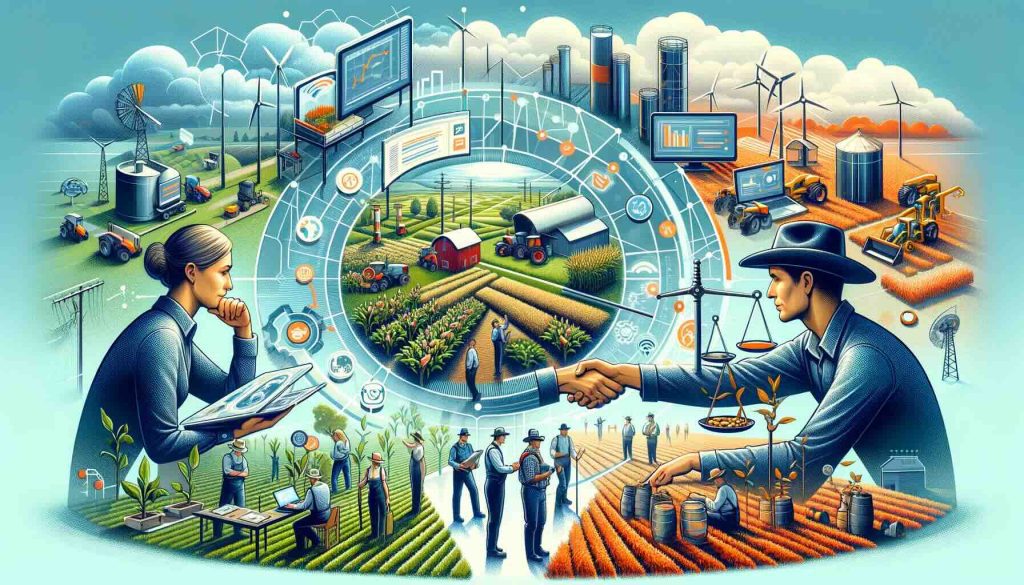
But several preconditions are vital to realize the full promise:
- Farmers must proactively plan AgTech adoption around core challenges and farm-specific contexts.
- Staff will need expanded technology and analytics expertise to utilize solutions fully after implementation.
- Upgraded rural infrastructure, especially high-speed internet, enables cutting-edge advancements.
- Constructive partnerships between technology innovators and farmers will maximize real-world value.
- Policies and incentives must ensure agtech benefits small farms and rural communities equitably.
Done right, agricultural technology of tomorrow offers profound opportunities to feed evermore people while stewarding the planet’s limited natural resources. Yet it also raises risks like deepened digital divides. With informed management and a long-term perspective, the future of farming indeed looks bright.

